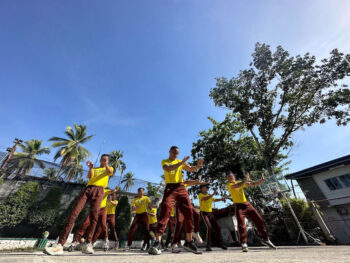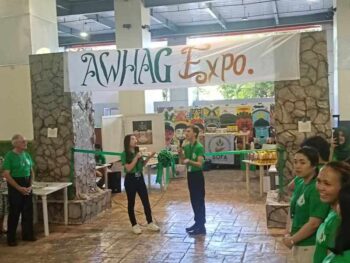
(Done in 1992 at Iligan City, published initially as two versions. First as the abbreviated edition published by The Minority Rights Group, London entitled The Lumad and Moro of Mindanaw, July 1993. The Philippine edition carrying the full draft was printed by AFRIM in Davao City 1994. This was later updated in 2003, summarized in an epilogue. This is the third revision, now with an expanded Epilogue.)
5th of 16 parts
Chapter 2. The ICC Situation in Mindanaw-Sulu
The indigenous cultural communities in Mindanaw and Sulu regard themselves as the real owners of the greater part of the region. The others were those indigenous inhabitants who constituted the Christian converts during the Spanish period.
Twentieth century migrants from the northern islands, however, have challenged this claim.
Now, except for four provinces and a few other towns for the Muslims, and about eight or ten towns for the Lumad, they have become numerical minorities in their ancient territory.
Pressed to their limits, deprived of land and dignity, decisions have been made to take their survival into their own hands.
In 1972 the Moro National Liberation Front launched its revolutionary war of independence for the Bangsamoro.
In mid-1986, Lumad-Mindanaw initiated and led the Lumad struggle for self-determination. This, however, is not armed and is expressly for self-determination within the Republic of the Philippines.
This is the story of the 13 Moro ethno-linguistic groups and the 18 Lumad tribes of Mindanaw, the Sulu Archipelago and Palawan. The story of their dispossession, disenfranchisement and fight for survival, as seen from their own eyes.
Individually, they may consist of more than 30 distinct linguistic groups, but recent studies have shown that they actually have much in common, linguistically, and folklore-wise. One research has arrived at the conclusion that the Manobo language is actually the parent language of 18 others, referred to as the Manobo sub-family of languages, found in Mindanaw, Camiguin Island, and Cagayancillo Island in the Sulu Sea.
Common origin stories also abound among Muslims and Lumad. Among the Kalibugan or Kolibugan of Titay, Zamboanga del Sur, they speak of two brothers as their ancestors, both Subanen. Dumalandalan was converted to Islam while Gumabon-gabon was not. Among the Subanen of Lapuyan, also in Zamboanga del Sur, they talk of four brothers as their ancestors. Tabunaway was the ancestor of the Magindanaw; Dumalandan the Meranaw; Mili-rilid of the Teduray, and Gumabon-gabon of the Subanen.
The Manobo of Cotabato and the Magindanaw say that brothers Tabunaway and Mamalu are their common ancestors, although they differ on which of the two was converted to Islam. In the Manobo version, it was Mamalu who became Muslim, and in the Magindanaw version, it was Tabunaway. The Manobo version further states that they share the same ancestor with the Ilyanun, the Matigsalug, the Talaandig, and the Meranaw.
In the Teduray tradition, the same brothers Tabunaway and Mamalu are acknowledged as their ancestors.
Another version says that the Teduray, the Manobo, the Bla-an, the T’boli, and the Magindanaw have common origins. “The inhabitants of Slangan, Magindanaw, Katitwan, and those of the other settlements of the valley were pagans and were very similar to the present Tedurays in language and worship. Those who adopted the new religion remained in the rich lowlands of the valley, but those who refused to do so fled to the mountains and have stayed away ever since. Those who wavered in accepting the new terms of submission and who later suffered to stay in the neighboring hills were called Teduray. Those who refused to submit, fled to more distant places, and kept up their enmity and opposition were called Manobos. The pagans who are thus spoken of as related to the Moros of Mindanaw in origin, besides the above, are the Bla-an, the Tagabili and the Subanen.”
The Higaunon and the Meranaw also speak of a common ancestry in their folklore especially in the border areas of Bukidnon and Lanao. This seems more pronounced in the Bukidnon folklore.
The Kalagan belong to the same tribe as the Tagakaolo.
Traditional Indigenous Territory
Historically, “Moro” refers to the 13 Islamized ethno-linguistic groups we have enumerated earlier. The name has been much disliked by these Muslims for many years, coming as it did from their Spanish enemies who for more than three centuries subjected them to constant attacks aiming to colonize them. However, since the Moro National Liberation Front bannered it in its struggle, it has acquired a new meaning and has become a source of pride for its users. It is also used interchangeably with “Bangsamoro” (Moro nation or Moro people).
Lumad is a Cebuano Bisayan word meaning indigenous which has become the collective name for the l8 ethno-linguistic groups which follow, in alphabetical order: Ata, Bagobo, Banwaon, Bla-an, Bukidnon, Dibabawon, Higaunon, Kalagan, Mamanwa, Mandaya, Mangguwangan, Manobo, Mansaka, Subanen, Tagakaolo, T’boli, Teduray, Ubo. Representatives from 15 of the 18 tribes agreed to adopt a common name in a Congress in June 1986 which also established Lumad-Mindanaw. This is the first time that these tribes have agreed to a common name for themselves, distinct from the Moros and different from the Christian majority. Lumad-Mindanaw’s main objective is to achieve self-determination for their member tribes.
The choice of a Cebuano word – Cebuano is the language of the natives of Cebu in the Visayas – was a bit ironic but it was deemed to be most appropriate considering that the various Lumad tribes do not have any other common language except Cebuano.
Our data researches reveal that in the 22 provinces and 16 cities which constitute the entirety of Mindanaw and Sulu Archipelago, Palawan excluded, the Moros are traditional inhabitants of a territory now found within 15 provinces and seven cities. The Lumad for their part are traditional occupants of a territory encompassed within 17 provinces and 14 cities. The indigenous Christians, on the other hand, were traditionally found in nine provinces and four cities, mostly in northern and eastern Mindanaw. We include here, in passing, the Chavacanos who came to Zamboanga sometime in the 18th century.
Basis of Indigenous Claim to Territory
There is incontrovertible evidence that the above-mentioned indigenous peoples have been living continuously without interruptions in their places of habitation at least since 1596 until 1898. By incontrovertible evidence, we refer to the fact that all three major categories enjoy three characteristics in their occupancy.
First, they were the first to arrive there. In instances where a group may have come later, as in the case of the Moros among the Subanen in the Zamboanga peninsula, consent was obtained from the first occupant. The late arrival of the Chavacanos in Zamboanga, in the first quarter of the 18th century, did not cause any disturbance of displacement among the local occupants.
Second, among the various groupings it was the clan, not necessarily the ethno-linguistic group, that had a tradition of communal ownership and control of their territory, although it is worth noting that individual ethno-linguistic groupings tended to live in contiguous areas.
Lastly, their occupancy was continuous and without interruption at least until 1898. There were no significant developments then, no reported large-scale displacement or dispossession of indigenous population. These three characteristic features constitute the foundation of the current concepts of ancestral domain among the various ethno-linguistic groups.
The case of the Moro people is different in that aside from being traditional occupants of their ancestral territory, they also enjoyed the advantage of having been part of one sultanate or another. These were de facto States which exercised jurisdiction over both Muslims and non-Muslims. Hence, Moro territory was both ancestral and state territory.
(MindaViews is the opinion section of MindaNews. A peace specialist, Rudy Buhay Rodil is an active Mindanao historian and peace advocate.)
Tomorrow: First Foreign Intrusion; The Spanish Challenge







